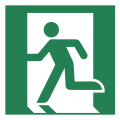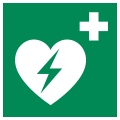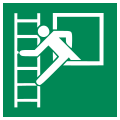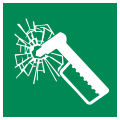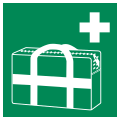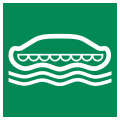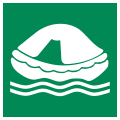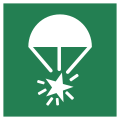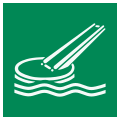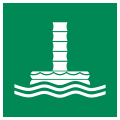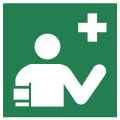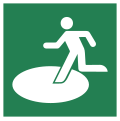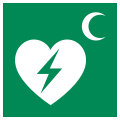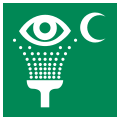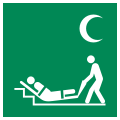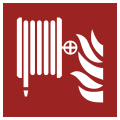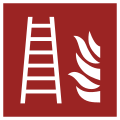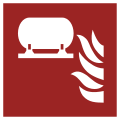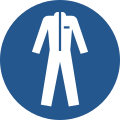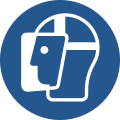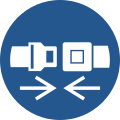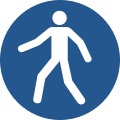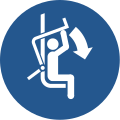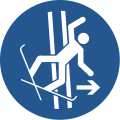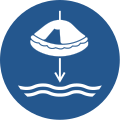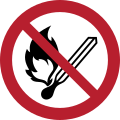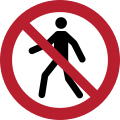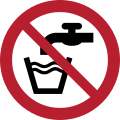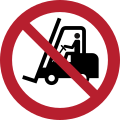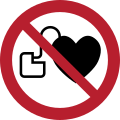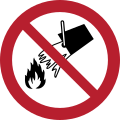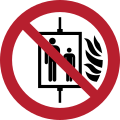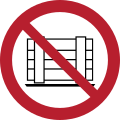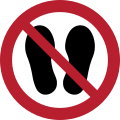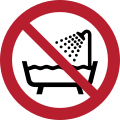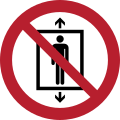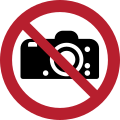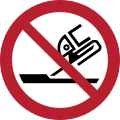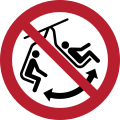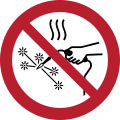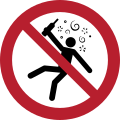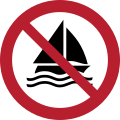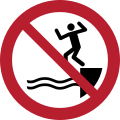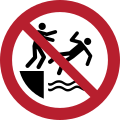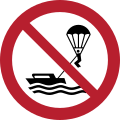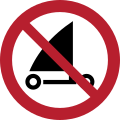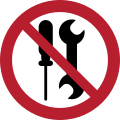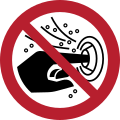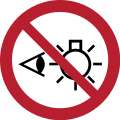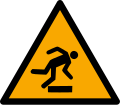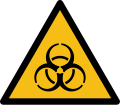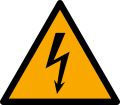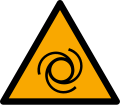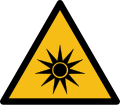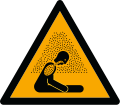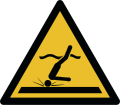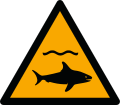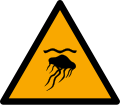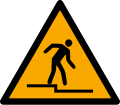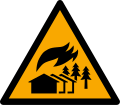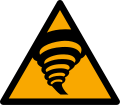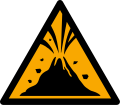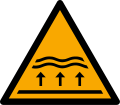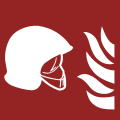P001 – General prohibition sign
P002 – No smoking
P003 – No open flame; Fire, open ignition source and smoking prohibited
P005 – Not drinking water
P006 – No access for forklift trucks and industrial vehicles
P007 – No access for people with active implanted cardiac devices
P008 – No metallic articles or watches
P009 – No climbing
P010 – Do not touch
P011 – Do not extinguish with water
P012 – No heavy load
P013 – No activated mobile phone
P014 – No access for people with metallic implants
P015 – No reaching in
P016 – Do not spray with water
P017 – No pushing
P018 – No sitting
P019 – No stepping on surface
P020 – Do not use lift in the event of fire
P021 – No dogs
P022 – No eating or drinking
P023 – Do not obstruct
P024 – Do not walk or stand here
P025 – Do not use this incomplete scaffold
P026 – Do not use this device in a bathtub, shower or water-filled reservoir
P027 – Do not use this lift for people
P028 – Do not wear gloves
P029 – No photography
P030 – Do not tie knots in rope
P031 – Do not alter the state of the switch
P032 – Do not use for face grinding
P033 – Do not use for wet grinding
P034 – Do not use with hand-held grinder
P035 – Do not wear metal-studded footwear
P036 – No children allowed
P037 – Do not leave the tow-track
P038 – Do not swing the chair
P039 –
Hot works prohibited
P040 – Do not set off fireworks
P041 – No leaning against
P042 – Not for pregnant women
P043 – Not for people in the state of intoxication
P044 – Use of
smart glasses prohibited
P045 – No campfire
P046 – Do not stretch out of toboggan
P047 – Do not ram into toboggans
P048 – No running
P049 – No swimming
P050 – No snorkelling
P051 – No sub-aqua diving
P052 – No diving
P053 – No sailing
P054 – No windsurfing
P055 – No manually powered craft
P056 – No mechanically powered craft
P057 – No personal water craft
P058 – No towed water activity
P059 – No surf craft
P060 – No outdoor footwear
P061 – No jumping into water
P062 – No pushing into water
P063 – No body boarding
P064 – No surfing between the red-and-yellow flags
P065 – No kite surfing
P066 – No parasailing
P067 – No sand yachting
P068 – Do not expose to direct sunlight or hot surface
P069 – Not to be serviced by users
P070 – Do not put finger into the nozzle of a hydromassage
P071 – Do not cross barrier
P072 – No jumping down
P073 – Do not shut lid when burners are operating
P074 – Child seat installation prohibited
P075 – Do not stare at light source
P080 – No access for unauthorized persons
P081 – Do not cover appliance
 No open flame
No open flame Use hearing protection
Use hearing protection Emergency assembly point
Emergency assembly point Fire extinguisher
Fire extinguisher